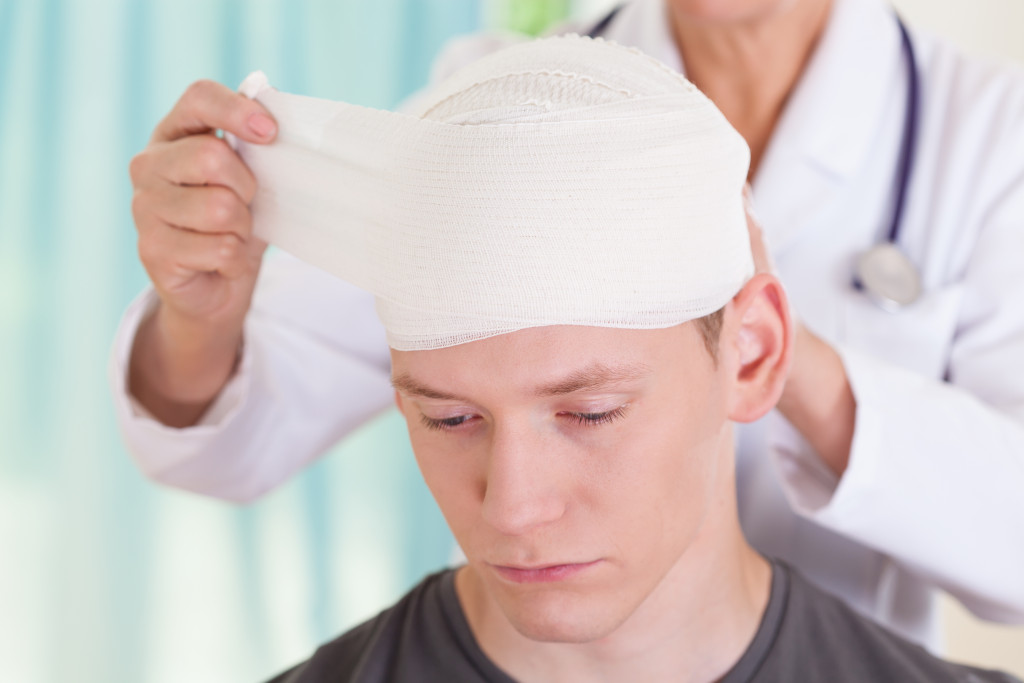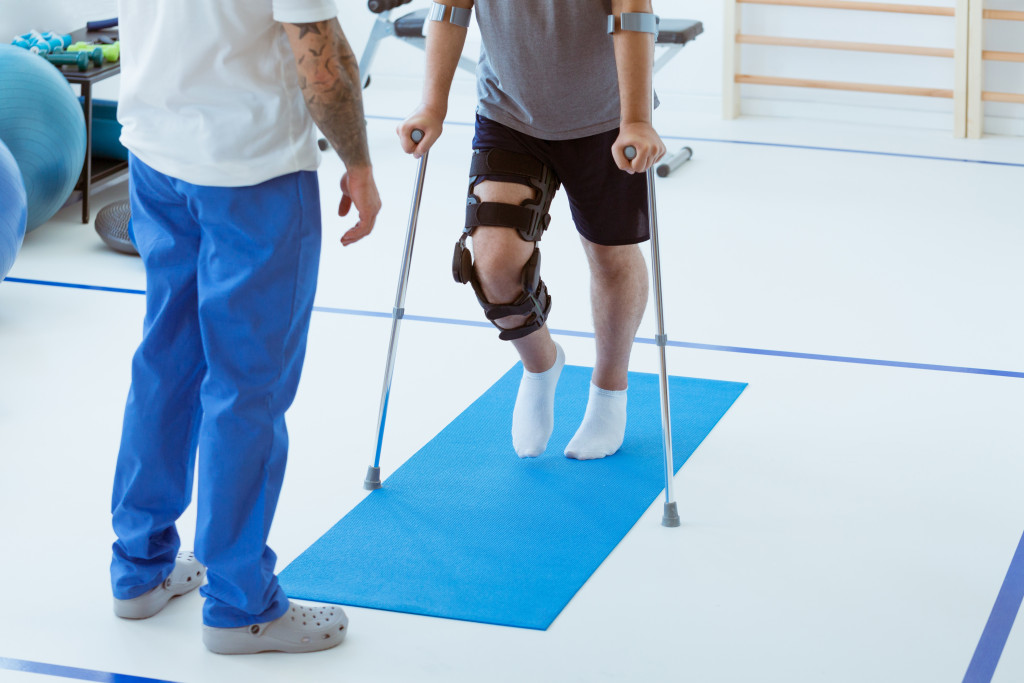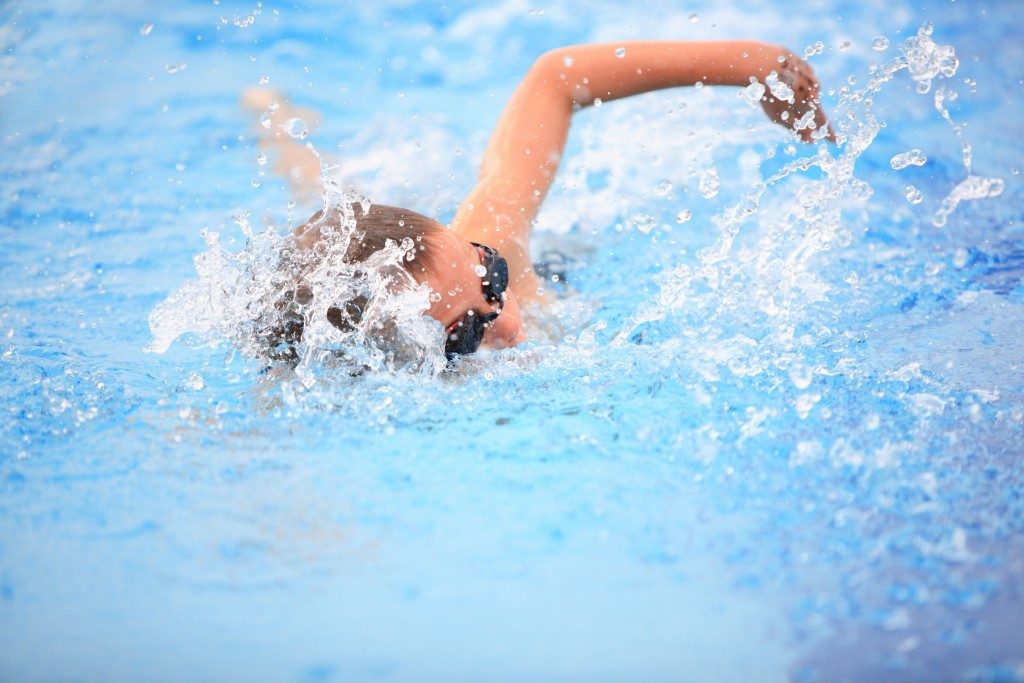- Sports injuries are common and can sideline athletes for weeks or months.
- Common injuries include head injuries, sprains, strains, stress fractures, and shoulder injuries.
- Treatment options for different injuries vary, including the RICE method, rest, medication, and surgery.
- Athletes should seek medical attention immediately and follow the doctor’s recommendations for a safe return to action.
Sports can keep you fit, boost confidence, and enhance your social life. However, sports activities are quite challenging, and injuries are a natural part of the game. Injuries such as sprains, fractures, and strains can sideline you for weeks, meaning you will miss out on the action and the fun. No matter the type of sport you participate in, you are prone to injuries, so it’s essential to know how to deal with them.
This blog will explore some common injuries athletes experience while participating in their sport and how to deal with them.
1. Head Injuries
Head injuries such as concussions are common among athletes in sports such as football, rugby, and soccer. They are caused by a strong blow or hit to the head and can result in headaches, dizziness, and unconsciousness. They can also cause long-term damage to the brain.
If you suspect you’ve had a head injury, it’s essential to seek medical attention immediately. You can then follow the doctor’s recommendations on the right time to get back into action. If the injury is severe, you may need to rest completely for a few weeks or even months. This will help you recover fully and prevent further complications.

2. Sprains
Sprains are the most common sports injuries that can occur in any sport. They are caused by overstretching or tearing of the ligaments and tendons. Common sites for sprains are the ankles and wrists. You can deal with sprains using the RICE method, which stands for Rest, Ice, Compression, and Elevation. This method can help reduce pain and swelling and promote healing.
Ankle sprains are especially common in sports like basketball and soccer, which involve a lot of running, jumping, and turning. For more severe sprains, you may need professional ankle injury treatment that may include physiotherapy and other treatments to ensure a full recovery. This will help reduce the chances of re-injury.
3. Strains
Strains are similar to sprains, but they involve damage to the muscle and tendons. They usually occur in sports that require explosive movements, such as sprinting. If you experience a strain, it’s recommended that you rest the affected area and apply a cold compress to reduce swelling and pain. As with sprains, you can use the RICE method to alleviate the symptoms.
4. Stress Fractures
Stress fractures are tiny cracks in the bones caused by excessive and repeated pressure. Running, gymnastics, and basketball are some sports with a high risk of stress fractures. If you suspect that you’ve had a stress fracture, the best thing is to rest the affected area and seek medical attention to prevent further damage. Here are different rest tips for various body areas:
a. Foot
Avoid walking and standing for long periods. You can use crutches or a wheelchair to get around.

b. Arm
Avoid any activities that require lifting and gripping with the affected area. If you need to use your arm, do it slowly and in a controlled manner.
c. Leg
Rest completely from activities that require running or jumping. Many athletes opt for swimming and cycling as low-impact alternatives. These are good options to keep the body active while recovering.
d. Spine
Most activities that require you to bend, twist or lift should be avoided during the recovery period. You can, however, do some light exercises to promote healing and strengthen your back muscles.
5. Shoulder Injuries
Shoulder injuries are common in sports that require throwing, such as baseball, volleyball, and basketball. They can be caused by overuse or a direct blow to the shoulder. Treatment for shoulder injuries varies depending on the severity of the injury. Sometimes, icing the area and taking pain medication are recommended. In severe cases, you may require surgery.
Participating in sports is a great way to stay active and healthy. However, injuries are a natural part of the game, and you will get hurt eventually. Knowing the common injuries in your sport and how to deal with them, you can take the necessary steps to prevent them from sidelining you for weeks or months. Remember to listen to your body and seek medical attention if the injury worsens or worsens. You can return to action and enjoy your favorite sport with the proper treatment and therapy.

